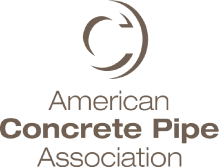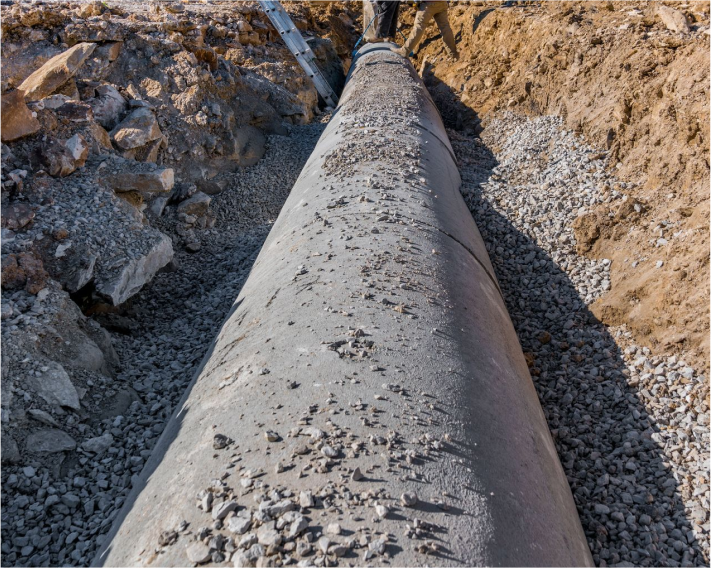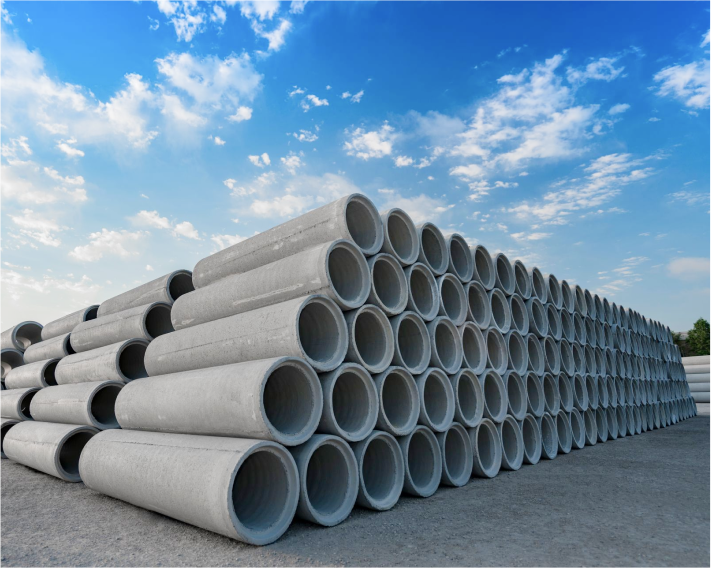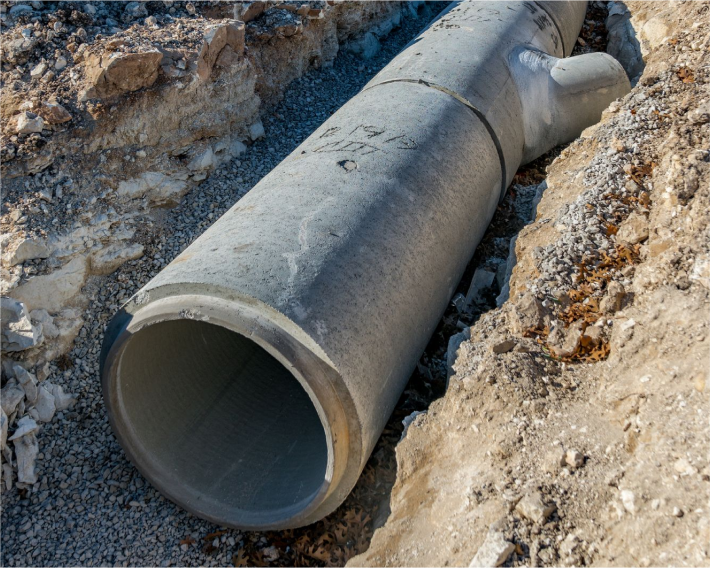Utilities—we don't always think about what runs beneath our feet, diverting water and sewer systems. But the use of proper storm sewers and culverts is essential to keep our cities functioning, clean, and safe.
Whether handling amounts of waste, accommodating sudden onsets of water runoff and flooding, or carrying water into agricultural sectors to irrigate crops, utilities are the veins beneath a city's concrete surface.
One of the most commonly used types of pipe is Reinforced Concrete Pipe, or RCP.
Concrete itself has been used as a construction material for even longer—a couple of thousand years, in fact. RCP is a sustainable product with a proven lifespan of more than 100+ years. This is why it is often the product of choice by specifiers and builders.
What is Reinforced Concrete Pipe (RCP)?

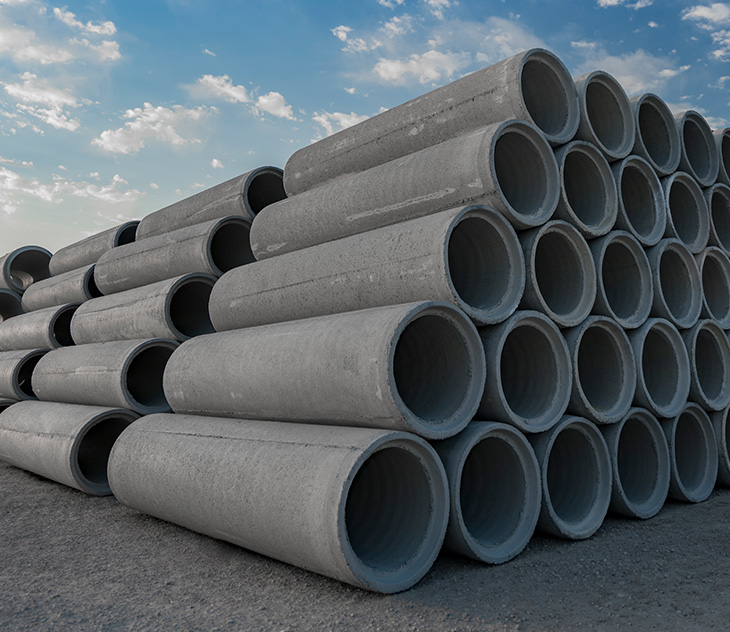
RCP is a type of piping used for directing the flow of liquids or water underground.
These pipes are typically used in roadway and site development, as they are designed to convey a very large amount of liquid volume and built to withstand environmental stressors.
Because of Reinforced Concrete Pipe's (RCP)
- Strength
- Reliability
This piping is ideal for infrastructure projects such as storm sewer conduits—RCP can handle large amounts of any runoff, flooding, or storm surges, safely diverting it from city or industry sectors.

Due to its innate resilience, RCP remains strong even through disruptive
events and stressors. RCP has impressive durability, sustainability,
and proven 100 year lifespan, allowing installations to remain functional
and effective for many years.
This means that residents and road users
will not be disturbed by unnecessary infrastructure rehabilitation or pipe
replacement.
Where is RCP Used?
RCP is a go-to for any utility project because it is one of the strongest and most durable building materials available.
Because of RCP's proven lifespan, often lasting more than 100 years, uses of concrete pipe include all types of major projects, such as:
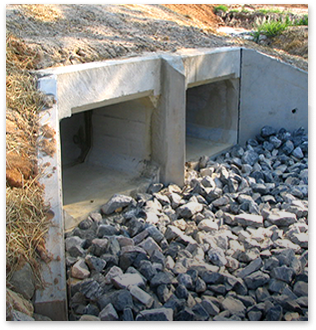
Culverts
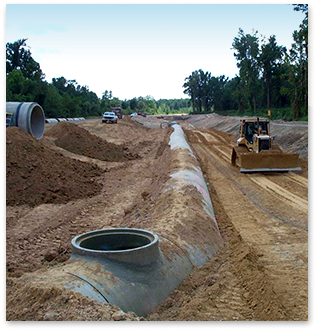
Sanitary Sewers
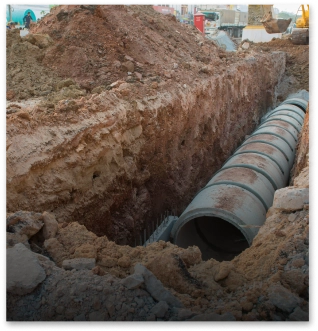
Storm Sewers
Contractors, engineers, and transportation departments across the country can rely on RCP to be the most durable selection in pipelines that last for well over a century. They can trust RCP's structure, rigidity, resilience, and dependability for many years.
What makes RCP?
RCP is constructed from concrete materials, as the name suggests. More specifically, the concrete materials tend to be,
Locally sourced
for each production location
Using
aggregates
Cementitious
materials
Domestic
steel reinforcement
As much eco-friendly
material possible
RCP is resilient and sustainable, leaving a lighter carbon footprint and minimal negative environmental impact than other pipe materials such as plastic.
What is RCP's Lifespan?
Concrete pipe is proven to have an incredibly long lifespan—you can expect RCP to last at least 100 years.

RCP can handle both large liquid volumes and external loads, therefore the extensive lifespan of RCP means less disruption to its environment and roadway users, as the pipeline won't have to be replaced or repaired as frequently as other pipe materials. RCP is resilient even through disruptive events and can resist many different types of stressors.
The History of RCP


Unsurprisingly, concrete is not a new invention. Ancient cultures like the Egyptians and Romans utilized concrete thousands of years ago. So, it's no wonder that we have learned to depend on concrete products for many construction needs and critical infrastructure projects.
The Origins of Concrete
One of the first recorded applications of what we now call concrete can be traced back to the Roman Empire, around the 2nd century BC. They began mixing volcanic ash, lime, and aggregates to create Opus Caementicium, the first truly effective concrete.
Opus Caementicium The first truly effective concrete
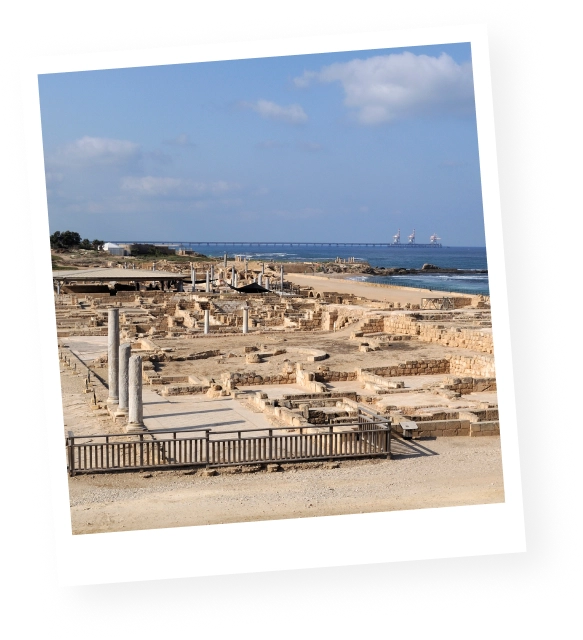
The earliest known example of underwater concrete technology
Pozzuolana's use in building the seaport of Caesarea Maritima is the earliest known example of underwater concrete technology.
The Original Concrete Piping Systems
The first underground application of pipes and culverts to manage water and sewer flow is also attributed to the Romans. When ancient Rome became too overpopulated for a surface sewer ditch system, work was begun on a massive underground concrete culvert and pipe system that drained local marshes to remove the waste of Rome and carry it into the River Tiber.
Rome's main sewer system
And so, the Cloacae Maxima (lit. “Greatest Sewer”) was constructed around 300 BC as Rome's main sewer system.
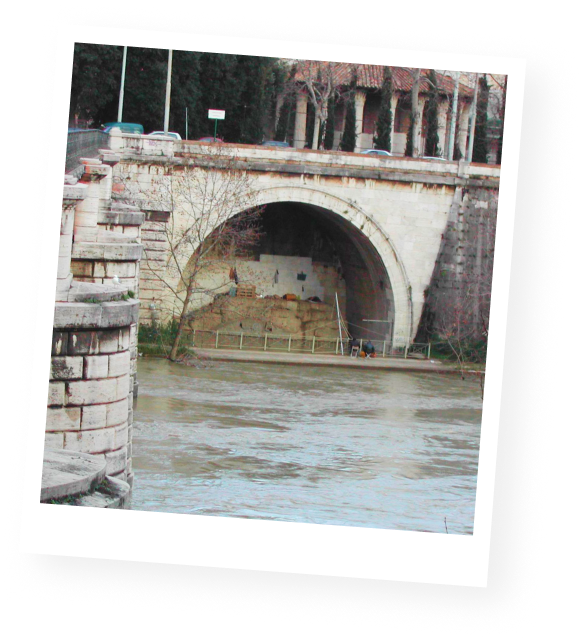
The eleven aqueducts that fed water into the city were also harnessed to help flush out the system, and separate pipes were installed to channel this fresh water to various public fountains.
Some two thousand years later, these concrete structures remain sturdy even with continuous exposure to water and liquid erosion.
The Evolution of Concrete Use

John Smeaton discovered a more efficient way to produce hydraulic lime for cement
In more modern times, a major breakthrough was made in 1793 when John Smeaton discovered a more efficient way to produce hydraulic lime for cement, using clay that contained limestone.

Invention of Cement
Joseph Aspdin invented Portland cement.

First apartment built
First apartment building using steel-reinforced concrete was built in Paris.
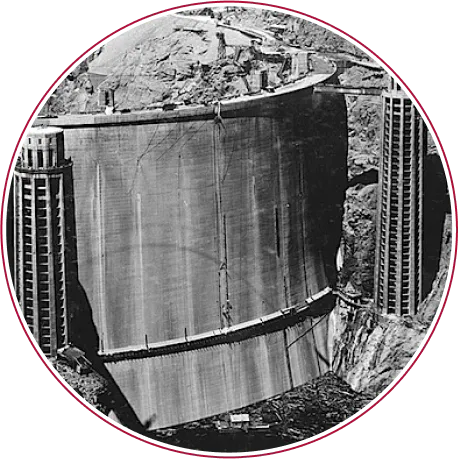
The number of large-scale concrete projects increased
The Hoover Dam and Grand Coulee Dam also joined the ranks of large-scale concrete projects in 1936.
First Uses of Concrete Pipe
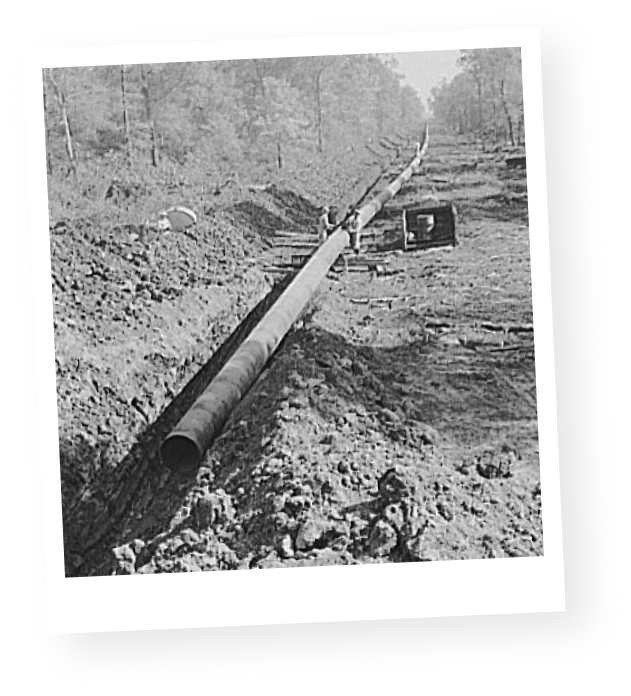
But the first appearance of modern-day concrete sewer systems in the USA came about during the mid-19th century. In Mohawk, N.Y. The earliest recorded use of concrete pipe was installed as a sewer system in 1842. In close succession, other east coast cities began to install concrete pipelines throughout the second half of the 19th century, with many of these pipelines still in use today.

In the 1860s, a French gardener and inventor named Joseph Monier created wire-enforced concrete when he was experimenting with building a stronger type of pot to withstand plant root pressure. He presented his invention at the Paris Exposition of 1867, and obtained his first patent for iron-reinforced concrete on July 16th, 1867.

Further patents followed, including iron-reinforced concrete pipes and basins in 1868, iron-reinforced concrete panels for building façades in 1869, and reinforced concrete beams in 1878.
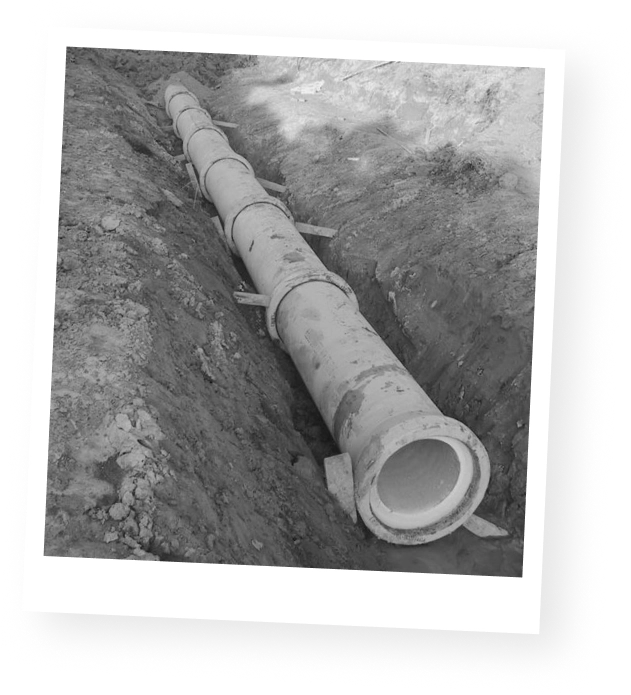
Other development breakthroughs in concrete pipe include the very first reinforced concrete pipes, incorporated in
- France in 1896
- America in 1905
- Australia in 1910
Of course, these early instances of RCP were much different than what we use today. The early process of constructing a large reinforced concrete sewer via open trench and concrete poured directly in place and cured onsite.

Later, during the 1930s, as sturdier motorized vehicles became more prevalent in the industrial sector, reinforced concrete pipes were no longer cast and cured at the jobsite, but were transported from regional casting factories to the site.
Industry Usage of RCP


In modern construction methods, though RCP is still used for many of the same applications such as water drainage and sewer systems, the process is more streamlined. Because concrete is the most durable and strong building material on the market today, RCP can be found in countless infrastructure and drainage projects.
Applications in City Planning
City sewer systems are one of the essential planning aspects of any metropolis. Sewage is a guaranteed waste product in any community, and city planners have to take this into account to ensure the sanitation of the city and the safety of its residents.
RCP is ideal for conveying liquids, it remains strong through disruptive events and external stressors, and lasts for decades—up to 100+ years, and can serve for even longer under the right conditions.
Due to this lifespan and resiliency, the integrity of roadways and infrastructure is maintained without the need for unnecessary overhaul and repairs.
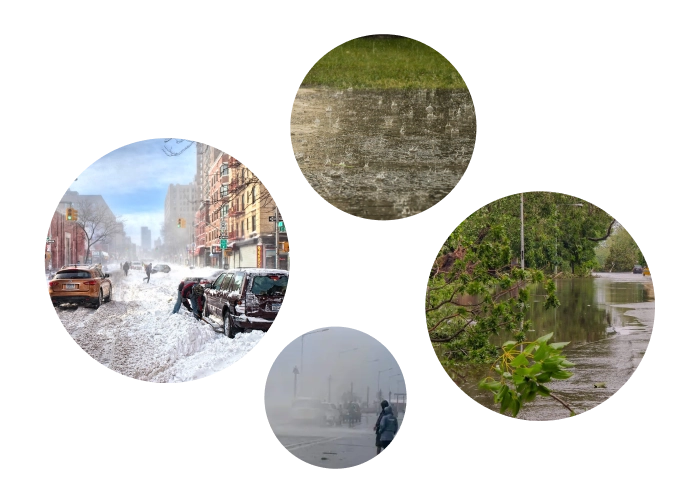
Storm drains are another crucial factor in city planning and should be designed to handle proper drainage flow rates in case of emergencies, especially if the city is in a documented flood, hurricane, or monsoon zone.
It's essential for city water-shed systems to have adequate accommodation in allowable slope velocity and open-channel hydraulics to deal with any excess water movement.

RCP allows for heavy waterflow with minimal erosion and dependence on soil support, making it ideal for storm drainage.
Applications in Construction
Apart from moving non potable water within cities, RCP is used for transporting non potable water underground over long distances.
It can even be installed by jacking or micro-tunneling when open-cut is not feasible.

For instance, culverts are an important part of roadwork considerations, placed in areas where water needs to flow under man-made structures.
They have to withstand heavy pressure loads from the construction atop them, high amount of water flow inside, and the pressure from surrounding soil and other materials, therefore RCP is ideal for these installations.
Applications in Irrigation
With the ability to transport large amounts of water quickly and efficiently, RCP provides a leading solution in agricultural settings.
The installation of buried RCP can help with irrigation efforts and environmental management applications, rather than using surface level piping that has to deal with uneven topography of textured soils.
Furthermore, the buried pipe is free of environmental issues such as freezing, blockages, or roadway interference to which open channel irrigation systems or above ground piping would be subjected.
Practical Considerations of RCP


Now that the applications and usage of RCP have been discussed, let us investigate more practical aspects of concrete pipe. When it comes to RCP, the physical aspects of handling, installing, and the actual joints and diameters of the pipes themselves are crucial to the strength, efficiency, and longevity of the pipe system.
RCP Measurements: Sizes and Uses
General RCP specifications for projects are as follows:

Diameters (D) = 12” to 144”
12” to 144” diameters are typical for conveyance of sewage, storm drainage, and culvert systems. Other applications are irrigation systems and treatment plant piping.

Diameters (D) = 15” to 144”
15” to 144” round equivalent diameters of elliptical pipe are excellent choices for spatial restrictions, clearance limitations, or when a piping system requires greater flow capacity for shallow conditions. Elliptical RCP has a geometric, flattened ellipse shape that can be orientated to have either a horizontal or vertical major axis.

Diameters (D) = 15” to 84”
15” to 84” round equivalent diameters, with sizes up to 144” equivalent diameter available in some locations, arch pipe is similar to elliptical pipe in use, including for various storm water applications. Shaped into an arch form, this pipe is good for limited cover conditions and improved hydraulic capacity at low flows.
Installing RCP

When installing sections of RCP, 2 workers, 1 foreman, and a backhoe or crane operator are necessary. Workers securely manage the pipe and with the assistance of a crane or backhoe, it is lowered into place.
workers
foreman
backhoe/crane operator
The spigot end of the new section is typically slotted into the bell end of the previously installed pipe. It is essential to place and join the sections of RCP correctly and securely.
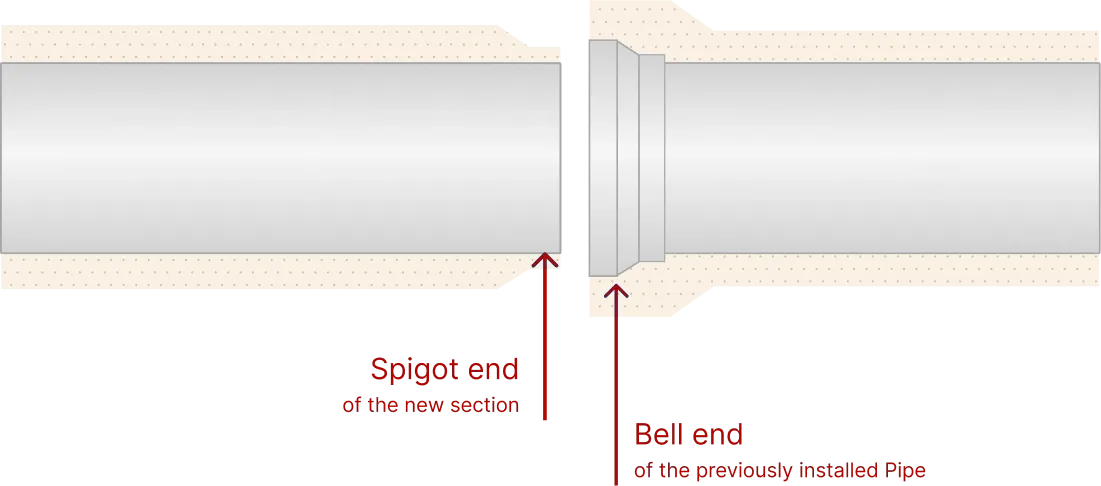
A properly fitted pipe system will be able to withstand external pressures, environmental considerations, and corrosion, leading to longer lasting pipes that will serve their purpose for several decades with no issues.
RCP and Concrete Joints
Any joints for a concrete pipe system need to be able to withstand pressure, structural stressors, possible erosion and environmental concerns, and other considerations. Joints are important for limiting inflow and infiltration in a closed system. Some of the most commonly used joints in RCP systems include:

Concrete joints are designed to control the positioning and compression of the sealing materials or gaskets, allowing the rigid nature of the joint to govern the hydraulic characteristics of seals, bends, and junctions. Further, joint deflection allows the flexibility of the pipe joints to the minimum angular deflection specified, to form a long radius or to return to grade. Even with larger degrees of angular deflection within specification limits, pressure on the joints is bearable and supported by the pipe material itself.
Governing Standards
ASTM International
Testing and inspection of joints used in RCP are thoroughly covered by national standards set by ASTM International.
AASHTO (the American Association of State Highway and Transportation Officials)
pipelines and their placement affect roadways, the national standards of AASHTO (the American Association of State Highway and Transportation Officials) are referenced.
These governing bodies utilize plant tests to verify joint strength, including vacuum, water, air, and exposure.
Joint Performance Characteristics
Concrete pipe joints are manufactured according to ASTM International standards, providing project appropriate joint designs that can include the following performance characteristics:
- Ease of installation
- Strength to handle shear or vertical shift
- Pipeline continuity and smooth flow without interruptions.
- Resistance to infiltration of groundwater or backfill materials
- Resistance to exfiltration of sewage or storm water
Benefits of RCP


Why Choose Concrete Pipe?
For decades, concrete pipe has been the first choice of contractors, city planners, engineers, and transportation departments.

Not only is RCP an incredibly versatile pipe material, but its proven long lifespan also means that any large-scale installations will remain reliably in place and save costs on unnecessary repairs or replacements.
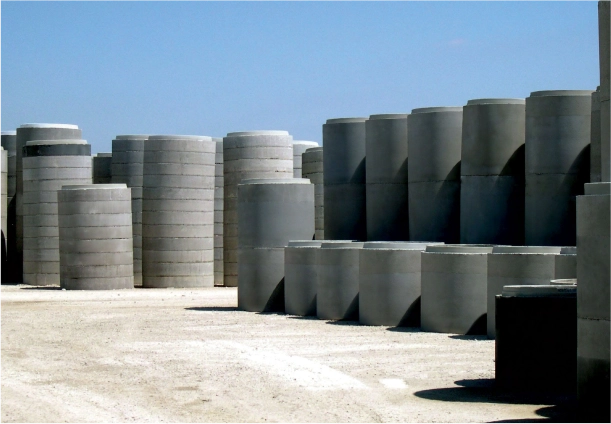
RCP design can be applied to essentially any project, and the range of applications makes it the number one choice.
Other benefits of RCP's inherent resiliency and sustainability include locally sourced material, reinforcements and pipelines that are resistant to disruptive events. These benefits provide RCP installations that will last for more than 100 years with few problems.
Durability and Lifespan of RCP


One of the main considerations of any construction material or product is how long it will last before replacement is needed.
This applies to discussions of cost efficiency, maintenance expense, and the hassle of entire replacement. But many sources do attest to the sturdiness and life-cycle cost benefits of reinforced concrete piping, leading to longevity of 100 years or more. So, what are some specific factors in the durability and lifespan of RCP?
How Long Will RCP Last?
As previously mentioned, RCP has many factors that make it a long-lasting product. But what specific lifespan estimate can you expect from RCP once it has been installed?
The United States Army Corps of Engineers has attested to a usage lifespan of up to 100 years for a reinforced concrete pipe, and has documented numerous instances of installations that have lasted even longer than these parameters. According to the US Environmental Protection Agency, concrete pipes will last at least 100 years, and very large pipes can be expected to last for several centuries.

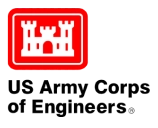
usage lifespan attested by
US Army Corps of Engineers
So, between its resilience and resistance to environmental factors, the Estimated Material Service Life of RCP exceeds alternative materials.
Material Service Life of Piping
When it comes to measuring pipeline lifespan, regardless of the material, “serviceability” is the key consideration—defined as the period of time for which a product can function at its intended role.
For example, the serviceability of sewers or culverts running underneath roadways would have to be considered as a conduit to transmit water and as a structure to support roadwork above.
The Canadian Ministry of Transportation's Gravity Pipe Design Guideline (GPDG) lists the following as factors in material degradation product wear:
- Abrasion
- pH Level
- Slow Crack Growth
- Soil and Water Resistivity
- Electro-Chemical Corrosion of Steel
- Acid, Chloride, or Sulphate Corrosion
Ultimately, these factors are the determinants for a pipe's life cycle analysis, or LCA, which refers to the number of years that a structure, system, or material will provide adequate service before needing replacement.
Understanding the factors that affect the estimated life span of pipelines is important to determining the longevity of RCP, and because of its natural strength and resistance to many environmental stressors and corrosion, concrete piping has one of the best serviceable lifespans, with serviceability of at least 100 years.
Latest Developments & Enhancements in RCP


Because pipelines and the construction industry are always innovating and pursuing the newest in manufacturing technology, you can always expect enhancements to RCP. Let's take a look at some of the latest developments in RCP production.
Innovations in RCP Structures
In terms of future RCP trends, there have been experiments with synthetic fibers imbedded into the concrete itself in order to minimize the need for steel reinforcement, lessening any potential issues with steel corrosion that could occur in rare circumstances.
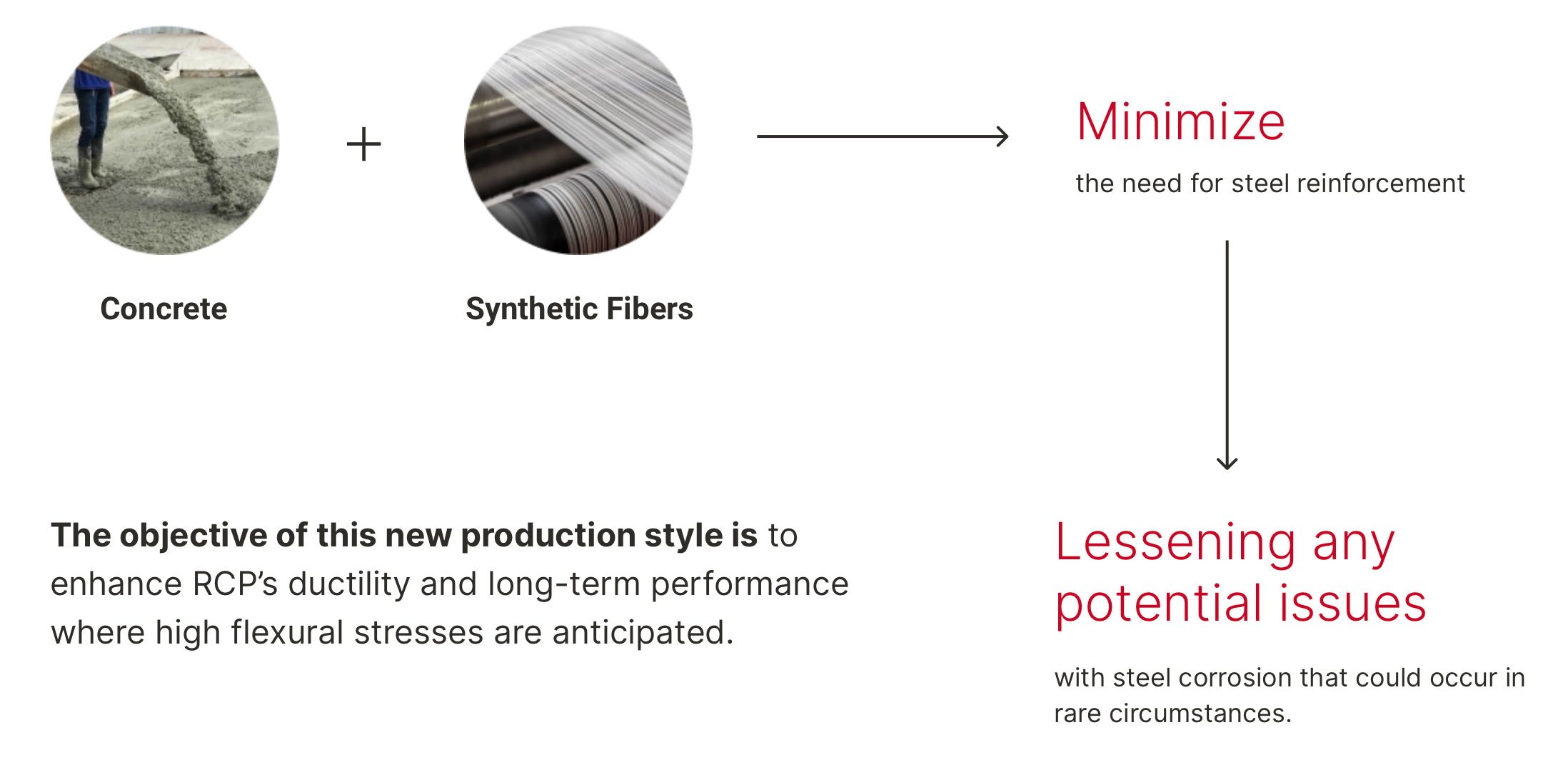
Luckily, you can keep abreast of the latest news and innovations in concrete piping with websites like the American Concrete Pipe Association's “Latest News” section.
- Significant structural strength Concrete pipe is rigid, with a significant structural strength.
- Double load barring capacity after installation The load carrying capacity of RCP can more than double after it is installed, because of the benefit gained by the bedding supporting the pipe.
- Adjustable structural strength of RCP The structural strength of RCP can be adjusted in several ways, by varying the wall thickness, concrete strength, and the amount and shape of the steel material reinforcement.

Because RCP does not have vulnerability to such damages, and has such a high structural integrity when installed, RCP is a more versatile, reliable, and long-term choice for various installations and infrastructure projects, with service lasting at least 100 years.
Reinforced
Concrete
Piping

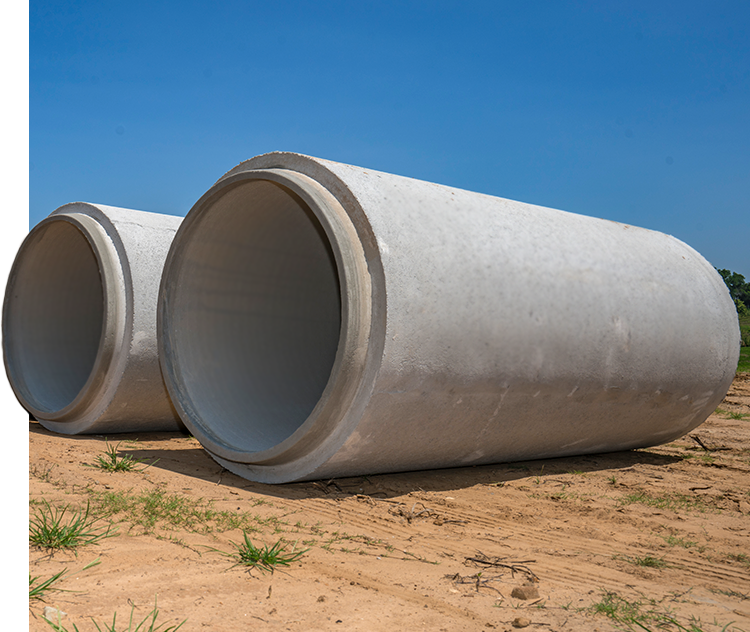
RCP is a standard pipe material utilized in countless industrial projects and construction applications. Used for sanitation systems, storm sewers, irrigation, culverts, water management, and treatment plant channeling, reinforced concrete piping is a mainstay in modern city planning and industrial work. RCP has undeniable, proven benefits, including its inherent strength, durability, resistance, cost-effectiveness, and ease of installation.
Choosing RCP for construction and industrial applications is the best option for expense, environment, and longevity.





